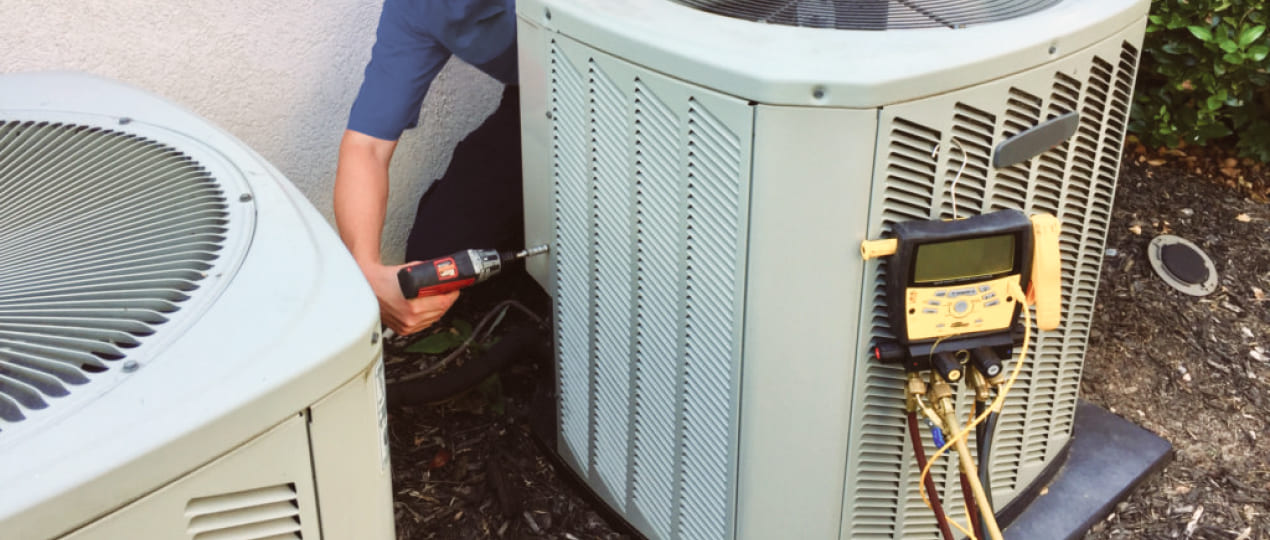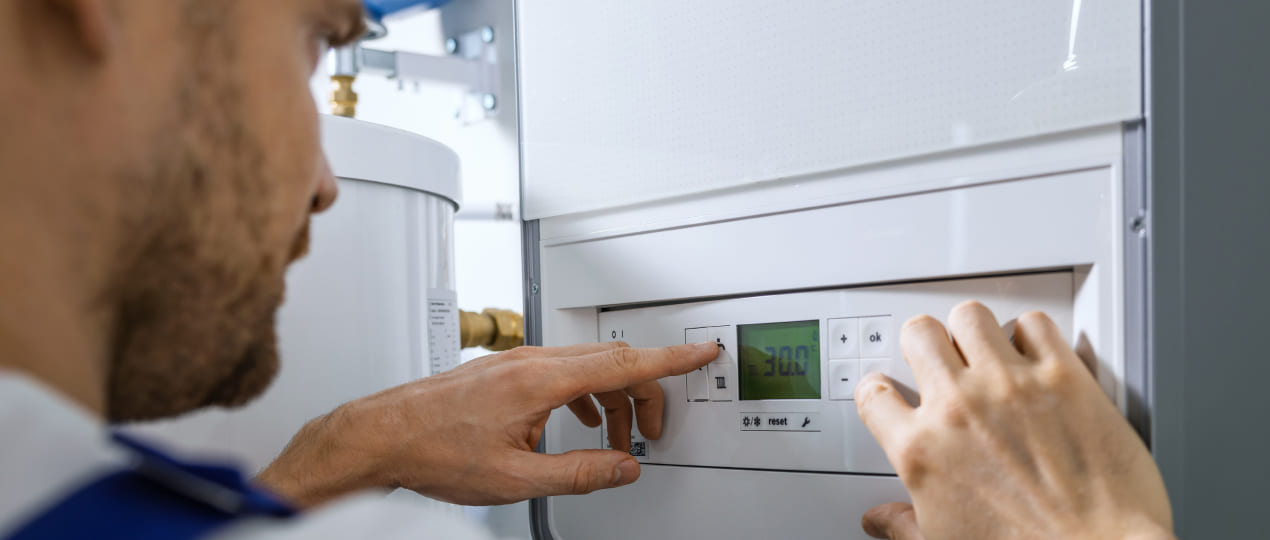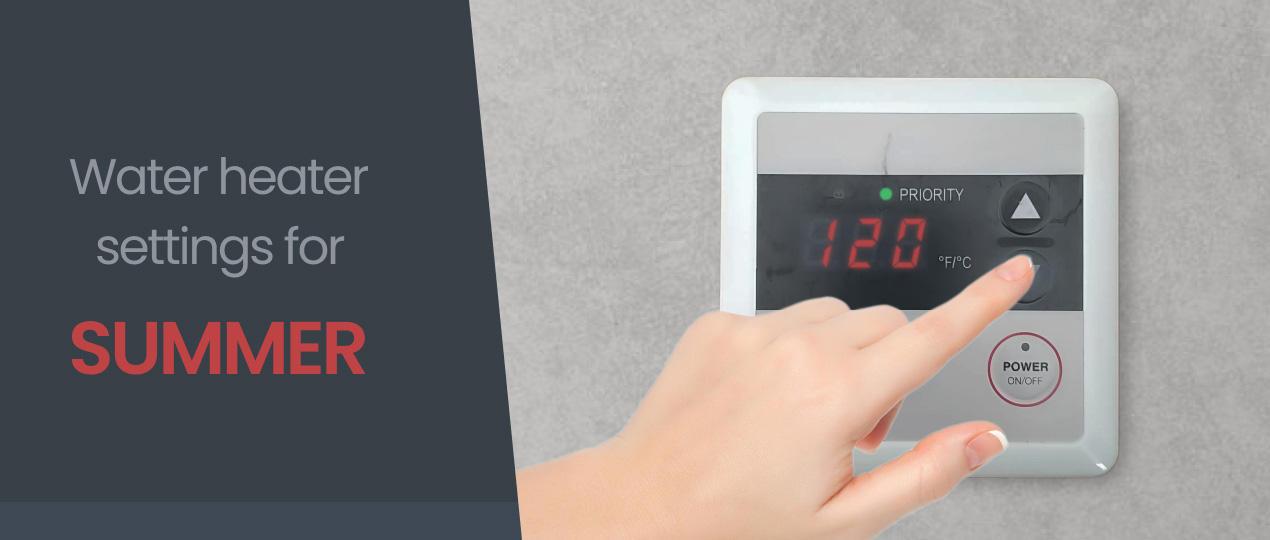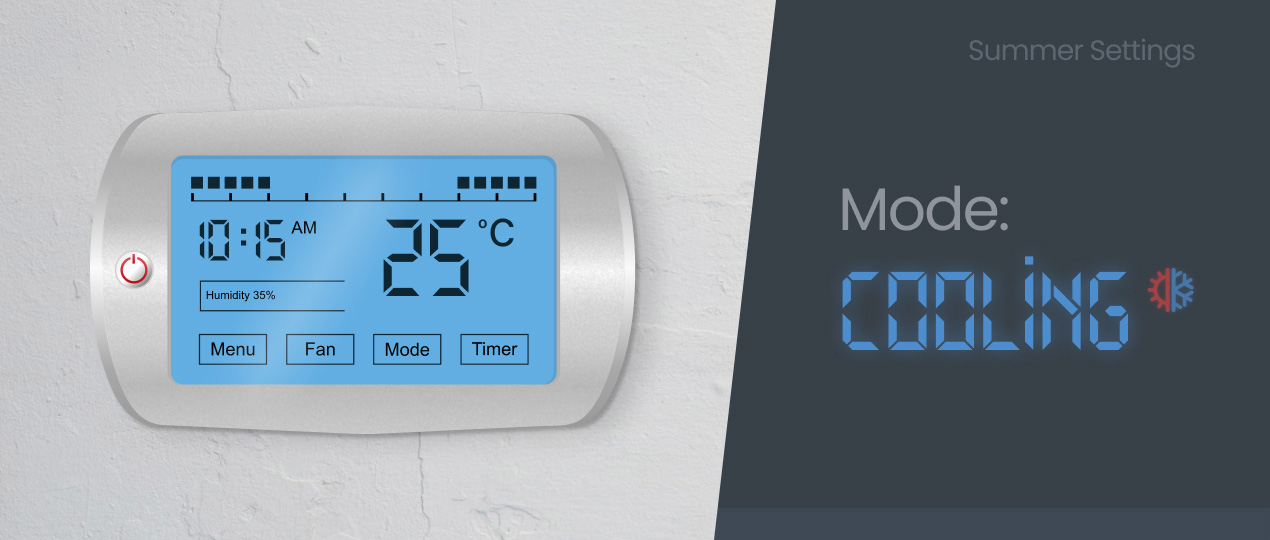
Air conditioners maintain comfortable indoor temperatures during hot summer months. However, efficiently operating ACs throughout changing seasons can be a challenge. Each season brings distinctive temperature and humidity levels, affecting our comfort and indoor air quality. During the summer, hot and humid weather typically prevails, necessitating lower indoor temperatures for comfort. In contrast, moderate temperatures may require less intensive cooling during cooler seasons like spring and autumn.
Recommended air conditioner settings for summer
During the hot summer months, it’s important to balance keeping cool and saving energy. Here are the best air conditioner settings for summer:
- Fan speed Use the fan settings wisely to efficiently circulate cool air in the room. A higher fan speed will help distribute air faster, while a lower speed may be sufficient to maintain a constant temperature.
- AC temperature setting Set the thermostat to a comfortable but energy-efficient temperature, ideally around 25-26°C when the room is occupied and slightly higher when it is not.
- Invest in programmable thermostats It allows you to automatically adjust the temperature based on the number of people in the room, providing optimal comfort and energy savings.
Best AC settings for spring and autumn
During transitional seasons such as spring and fall, outdoor temperatures fluctuate, creating mild conditions that may not require constant air conditioning.
- Natural ventilation Take advantage of cooler mornings and evenings by opening windows and allowing fresh air to circulate in the room. This will help reduce dependence on air conditioning during transitional periods.
- Thermostat settings Adjust the thermostat to match the changes in the outside temperature. Gradually increase the set temperature as the outside temperature becomes milder, reducing the load on the air conditioning system.
- Humidity control Monitor the humidity levels in your room and consider using dehumidifiers or humidity control settings on your air conditioner to maintain optimal comfort levels.
Air conditioner temperature setting for winter
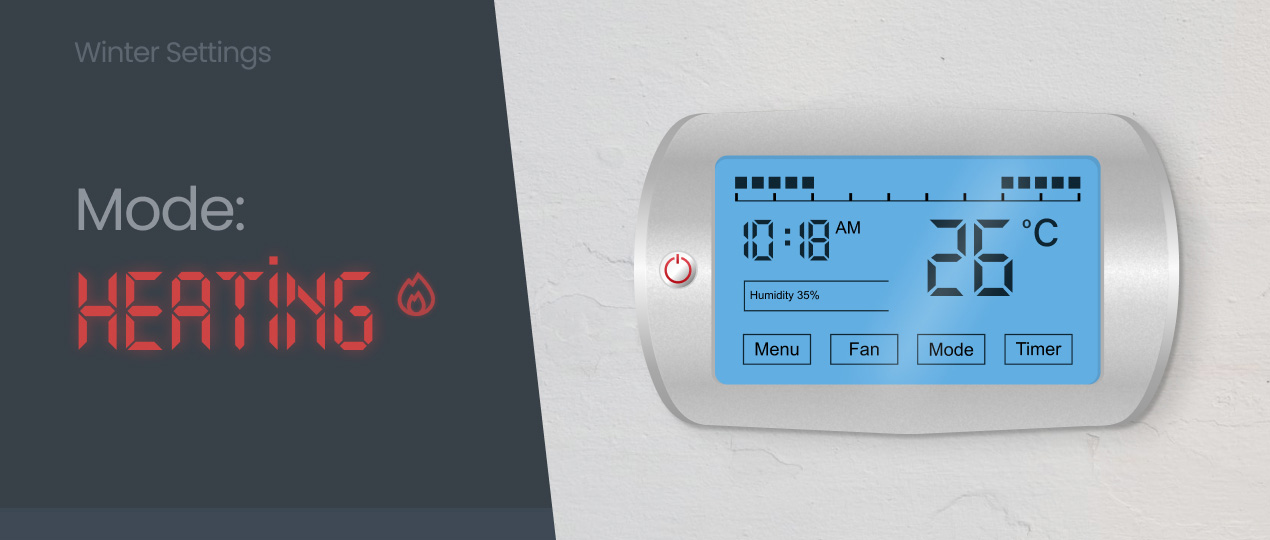
While the focus shifts from cooling to heating, optimizing your AC setting in winter remains important for energy efficiency and comfort. Here’s how to adjust it properly:
- Program the thermostat Set the thermostat to a comfortable temperature during hours when you are busy and to a lower temperature when you are not busy or at night.
- Maintain the air filter To ensure optimal airflow and heating efficiency, make air filter maintenance a priority. Clean or replace filters regularly to prevent dust build-up and maintain indoor air quality.
- Sealing and insulation Seal air leaks and provide adequate insulation to prevent heat loss and increase heating efficiency. Eliminating drafts and gaps in insulation can significantly reduce heating costs during the winter months.
Adjusting your air conditioner temperature setting to meet your seasonal needs is essential to maintain comfort, save energy, and extend the life of your air conditioner. Adjust your thermostat and airflow control for efficient and cost-effective climate control. Contact an HVAC expert for customized advice and solutions.
Trust us to provide cost-effective and long-lasting solutions for any HVAC issue.
Order the best specialist in Canada Now (866) 545-6460
REFERENCES
1. Ekasiwi, S. N. N., Majid, N. H. A., Hokoi, S., Oka, D., Takagi, N., & Uno, T. (2013). Field survey of air conditioner temperature settings in hot, humid climates, part 1: Questionnaire results on use of air conditioners in houses during sleep. Journal of Asian Architecture and Building Engineering, 12(1), 141-148. https://doi.org/10.3130/jaabe.12.141
2. Wang, N., Zhang, J., & Xia, X. (2013). Energy consumption of air conditioners at different temperature set points. Energy and Buildings, 65, 412-418. https://www.sciencedirect.com/science/article/abs/pii/S0378778813003496

